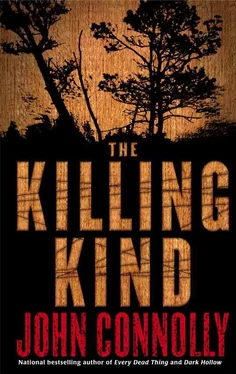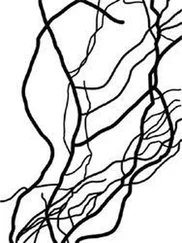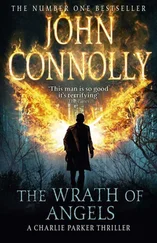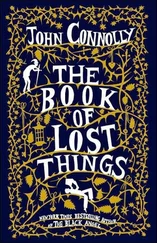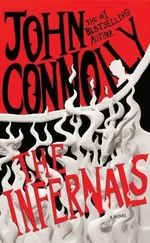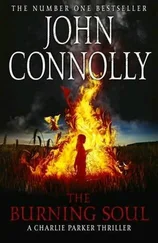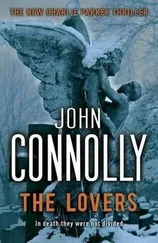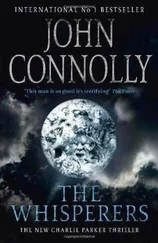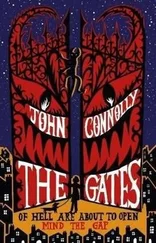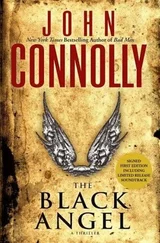“I left town as soon as I heard. Somebody called me about Al's death, a friend from way back, and I knew it had to be Pudd. Nobody else would dare make a move like that against Al Z.”
“Where are you?”
“New York.”
“Think you can lose yourself there, Mickey?”
“I have people down here. I'll make some calls, see what they can do for me.”
“We need to talk some more before you disappear. I get the feeling you haven't told me all that you know.”
I thought he would demur. Instead, he admitted: “Some I know, some I'm just guessing.”
“Meet me. I'll come down to you.”
“I don't know…”
“Mickey, are you going to keep running from this guy for the rest of your life? That doesn't sound like much of an existence.”
“It's better than being dead.” He didn't sound too sure.
“You know what he's doing, don't you?” I asked him. “You know what the threat of being ‘written’ means. You've figured it out.”
He didn't reply immediately, and I half expected to hear the connection being ended.
“The Cloisters,” he said suddenly. “Ten tomorrow. There's an exhibition in the Treasury you might want to take a look at before I get there. It'll answer some of your questions, and I'll try to fill in the gaps. But you're not there at ten and I walk away. You'll never see me again.”
With that, he hung up.
I booked a ticket on the Delta shuttle to La Guardia, then called Angel and Louis at the Copley. Rachel and I met them for coffee in the Starbucks on Newbury before I caught a cab to Logan. I was in New York by 1:30 P.M. and checked into a double room in the Larchmont on West Eleventh Street in the Village. The Larchmont wasn't the kind of place Donald Trump was likely to be frequenting but it was clean and inexpensive, and unlike most New York budget hotels, its double rooms weren't so small that you had to step outside to change your mind. In addition, it had a security-locked front entrance and a doorman the size of the Flatiron Building, so unwanted visitors would be kept to a minimum.
The city was unseasonably hot and humid, and I was soaked in sweat by the time I reached the hotel. The weather was due to break that night, but until then the A/C would be on full blast throughout the city, while those too poor to afford it made do with cheap fans. After a quick shower in a shared bathroom, I caught a cab uptown to West Eighty-sixth Street. B'Nai Jeshurun, the synagogue with which Yossi Epstein had until recently been involved, had an office on West Eighty-ninth, close by the Claremont Riding Academy, and it seemed that while I was in Manhattan it might be useful to try to find out a little more about the murdered rabbi. The noise of children leaving P.S.166 echoed in my ears as I walked to the synagogue's office, but it was a wasted trip. Nobody at B'Nai Jeshurun seemed able to tell me much more than I already knew about Yossi Epstein, and I was referred instead to the Orensanz Center on Norfolk Street on the Lower East Side, where Epstein had relocated after his falling-out with the Upper West Side congregation.
To avoid the rush hour traffic I took the subway from Central Park West as far as Broadway and East Houston, which left me sweating again, then strolled along Houston, past Katz's Deli and storefront operations selling garbage masquerading as antiques, until I came to Norfolk Street. This was the heart of the Lower East Side, a place that had once been full of scholars and yeshivas, of anti-Hasidic Lithuanians and the rest of the first wave of Russian Jews, who were regarded by the already settled German Jews as backward Orientals. It was said that Allen Street used to belong to Russia, there were so many Russian Jews there. People from the same town formed associations, became tradespeople, saved so their kids could go to college and better themselves. They shared their neighborhoods uneasily with the Irish, and fought with them on the streets.
Now those times were largely gone. There was still a workers' co-op on Grand Street, a few Jewish bookstores and skullcap manufacturers between Hester and Division, one or two good bakeries, of course, and Katz's, the last of the old-style delis, now staffed almost entirely by Dominicans, but most of the Orthodox Jewish community had moved to Borough Park and Williamsburg, or to Crown Heights. The ones who were left were mainly too poor or too stubborn to retreat to the suburbs or Miami.
The Orensanz Center, the oldest surviving synagogue in New York, once known as the Anshe Chesed, the People of Kindness, seemed to belong to another, distant time. Built by the Berlin architect Alexander Saltzer in 1850 for the German Jewish congregation, and modeled on the cathedral of Cologne, it dominated Norfolk Street, a reminder of the past still extant in the present. I entered through a side door, walked along a dark entrance lobby, and found myself in the main, neo-Gothic hall among elegant pillars and balconies. Dim light filtered in through the windows, turning the interior to the color of old bronze and casting shadows over flowers and white ribbons, the remnants of a wedding held some days earlier. In one corner, a small man with white hair, dressed in blue overalls, was sweeping paper and broken glass into a corner. He stopped his work as I walked over to him. I produced my ID and asked if there was anybody who might be willing to talk about Yossi Epstein.
“Nobody here today,” he said. “Come back tomorrow.” He resumed his sweeping.
“Maybe there's somebody I can call?” I persisted.
“Call tomorrow.”
I wasn't getting very far on looks and good manners alone. “Mind if I take a look around?” I asked and, without waiting for a reply, began to walk toward a small flight of stairs leading down to the basement. I found a locked door with a card pinned to it expressing sorrow at the death of Epstein. A bulletin board to one side listed times of services and Hebrew classes, as well as a series of lectures on the history of the area. There wasn't much more to see, so after ten minutes of unsuccessful snooping around the rest of the basement, I brushed the dust from my jacket and walked back up the stairs.
The old guy with the broom had disappeared. Instead, there were two men waiting for me. One was young, with a red skullcap that looked too small for his head and a head that looked too small for his shoulders. He wore a dark shirt and black jeans and, judging by his expression, wasn't one of the people of kindness. The man beside him was older, with thinning gray hair and a thick beard. He was dressed more traditionally than his friend-white shirt and black tie beneath a black suit and overcoat-but didn't look significantly kinder.
“Are you the rabbi?” I asked him.
“No, we are not connected with the Orensanz Center,” he replied, before adding: “You think everyone who dresses in black is a rabbi?”
“Does that make me anti-Semitic?”
“No, but carrying a gun into a synagogue might.”
“It's nothing personal, or even religious.”
The older man nodded. “I'm sure it's not, but it pays to be careful-with such matters. I understand you are a private detective. May I see some form of identification, please?”
I raised my hand and slowly reached into my inside pocket for my wallet. I gave it to the young guy, who handed it in turn to the older man. He examined it for a good minute, then folded it and handed it back to me.
“And why is a private detective from Maine asking about the death of a New York rabbi?”
“I think Rabbi Epstein's death may be connected to a case I'm investigating. I hoped that somebody might be able to tell me a little more about him.”
“He's dead, Mr. Parker. What more do you need to know?”
“Who killed him would be a start, or doesn't that concern you?”
Читать дальше
